Giraffa camelopardalis rothschildi, a.k.a. the Rothschild Giraffe, or Rothschild’s Giraffe, is a true sight to behold.
The Rothschild’s giraffe is one of the most easily recognizable giraffes in the world. It is listed as near threatened, but due to successful breeding programs, it is slowly regaining its lost numbers in the wild with an estimated 2,098 Rothschild’s giraffes left.
Despite its contribution to bringing giraffe numbers back up, the subspecies as a whole are still going to disappear (see #1 to find out why).
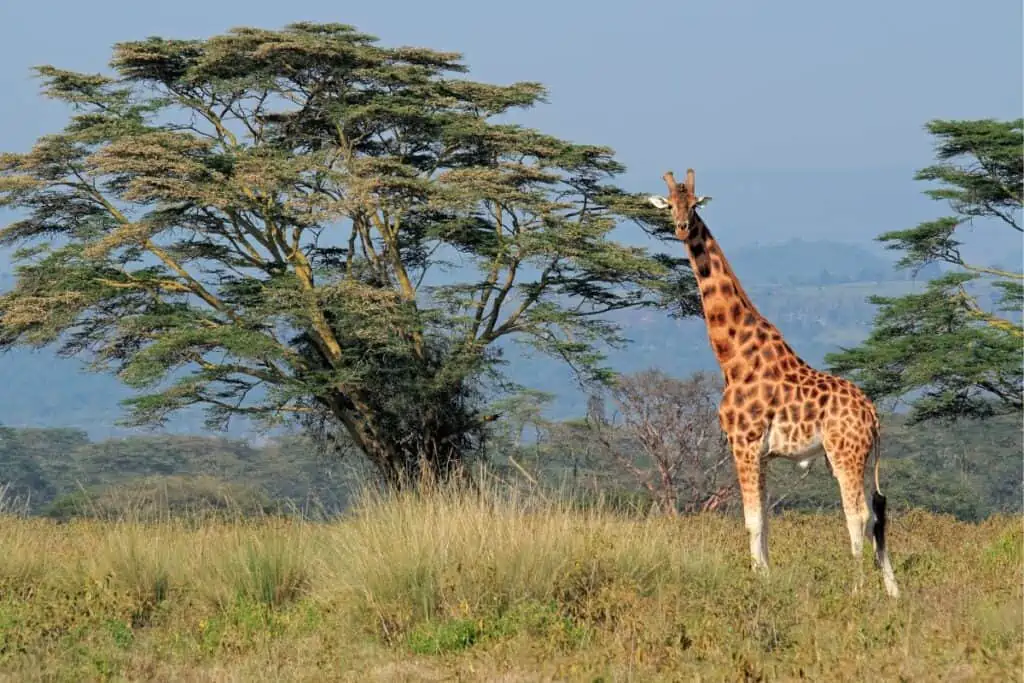
- 1. Rothschild’s Giraffe is not a unique subspecies
- 2. Named after Walter Rothschild
- 3. Might as well have been named the 5-Horned Giraffe
- 4. They wear socks or stockings
- 5. They’re technically the tallest giraffes in existence
- 6. They’re not immune to dwarfism
- 7. Natural sunscreen on its tongue
- 8. Like New Yorkers, they rarely sleep
- 9. Despite their friendly face, they like to fight
- 10. It may have saved the Nubian Giraffe from extinction
- Final thoughts on the Rothschild Giraffe
- FAQs
1. Rothschild’s Giraffe is not a unique subspecies
In 2016, a proposal emerged to absorb the Rothschild’s giraffe into the Nubian giraffe subspecies. It has yet to be widely accepted. Once that happens, the Rothschild’s giraffe will officially cease to exist and will continue living under a new scientific name.
In 2020, this was further backed up by a genome study that identified four unique giraffe species with four further subspecies.
Here, the Rothschild’s giraffe was listed as an ecotype of the Nubian giraffe once again.
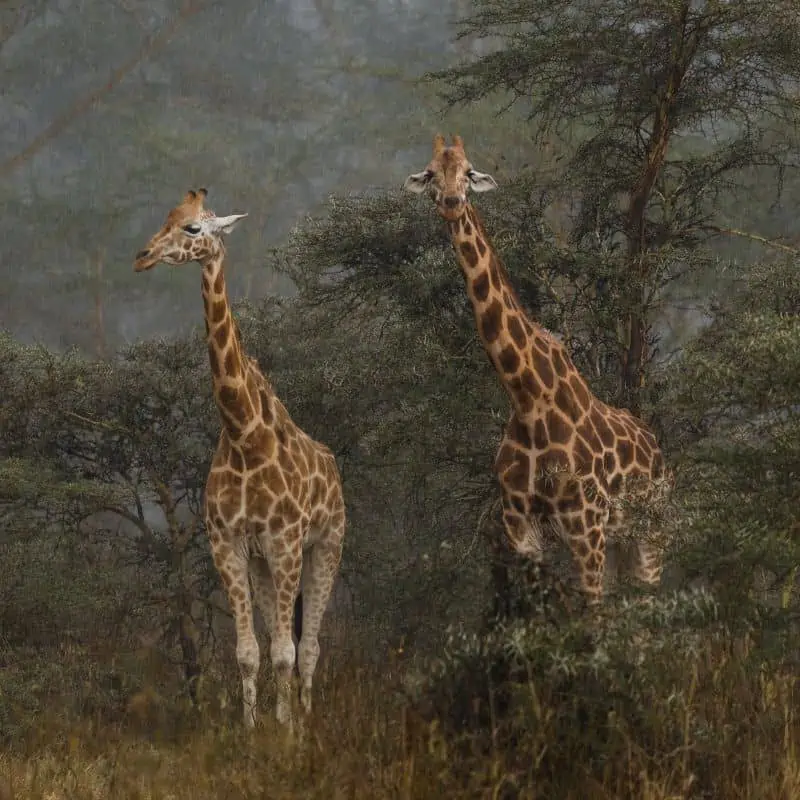
2. Named after Walter Rothschild
The Rothschild’s giraffe was named in honor of Walter Rothschild for contributing to the zoological field.
He gained recognition for amassing the largest collection of zoological specimens by a private individual and contributed actively to further the science to secure his name in history as a zoologist of note.
So, while money can’t buy you happiness, it can fuel your zoological passion and earn you the privilege of having an animal named after you.
Hence the scientific name Giraffa camelopardalis rothschildi.
3. Might as well have been named the 5-Horned Giraffe
The Rothschild’s giraffe is the only giraffe that has five ossicones.
They have two at the top of their heads, a mighty bump in the middle of the forehead, and another pair growing just behind the ears.
No other giraffe subspecies can boast that number of ossicones.
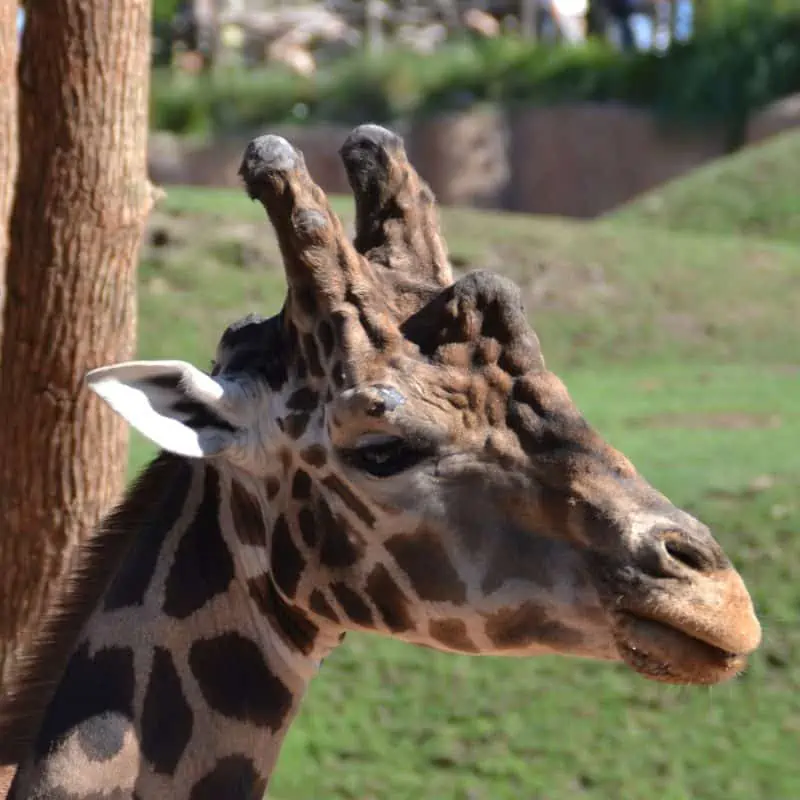
4. They wear socks or stockings
Looking at the Rothschild giraffe’s legs, you’ll see that it lacks markings from the lower segment down to the hooves.
This is unique to the Rothschild’s giraffe, and it looks like they are wearing stockings with that solid white portion.
5. They’re technically the tallest giraffes in existence
Giraffes, in general, are tall creatures, the tallest land mammals in the world.
And according to the Guinness Book of World Records, the tallest giraffe currently stands at 18.8 feet (5.7 m).
Officially a Nubian giraffe, but judging by the five ossicones on his head and white stockings on his legs, he’s a Rothschild’s giraffe.
His name is Forest, and you can find him at the Australian Zoo in Queensland. The same zoo run by the famous Irwin’s.
6. They’re not immune to dwarfism
Having the tallest representatives in your family does not exempt you from dwarfism.
Sightings of two dwarf giraffes have been confirmed in Uganda and Namibia. The one in Uganda is a Rothschild’s giraffe.
No one knows why this came about, but it may be due to a shallowing genetic pool.
Usually growing to at least 16 feet (male Rothschildi’s), the one spotted was a relatively short 8-9 feet, definitely putting it in the dwarf category.
7. Natural sunscreen on its tongue
Giraffes have fascinating long tongues, and the dark color prevents too much sun damage on this vital organ.
Giraffes spend the majority of their day grazing on the top of trees. Their tongues are constantly out, reaching for leaves and bringing them to its mouth.
That extended time outside of its mouth means it is constantly exposed to harmful UV rays, but the tongue has evolved to spend more extended periods exposed than most animal tongues.
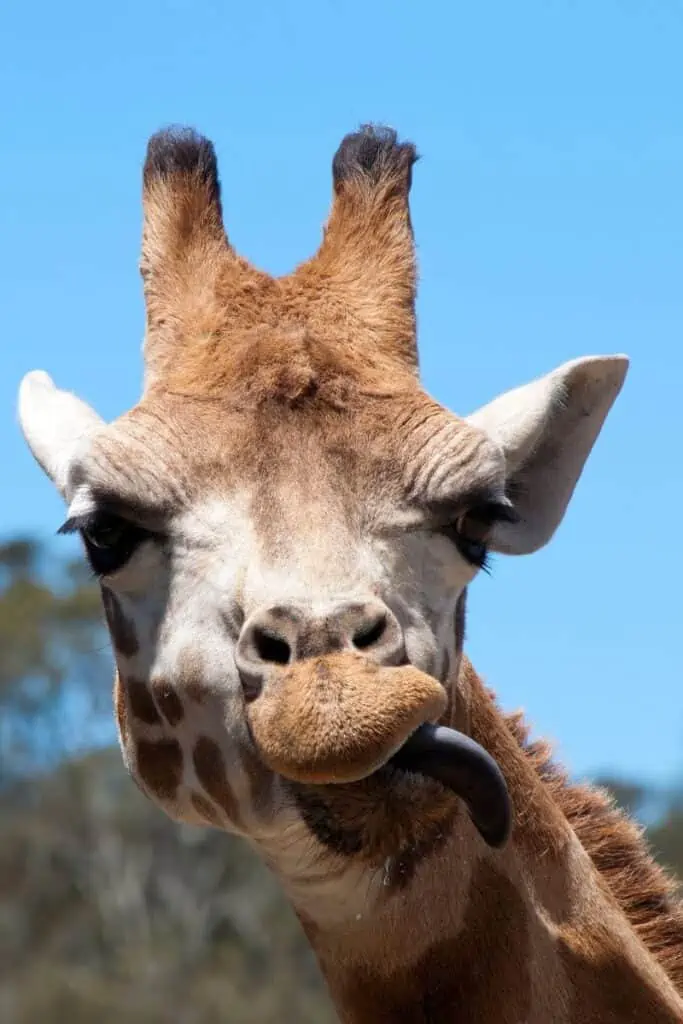
8. Like New Yorkers, they rarely sleep
Like other giraffes, Rothschild’s giraffes rarely sleep. If they do, it usually lasts only 30 minutes, and that’s only because there’s someone standing guard while they get their precious shut-eye.
This behavior is observed in the wild and captivity. It is hardwired into their brains to be on guard against predators constantly.
There have been reports of certain individual giraffes in captivity sleeping longer than 30 minutes at a time, some even up to 4 hours a day.
This may stem from the fact that captive-bred animals don’t have to worry about predators inside their enclosures.
9. Despite their friendly face, they like to fight
Watching a giraffe move from one tree to another is probably one of the most peaceful experiences. But behind those big brown eyes, the hint of a smile, and docile nature, is a warrior.
Rothschild’s giraffes have been known to battle for hours before one decides to give in and look for another place to graze or hang out in.
10. It may have saved the Nubian Giraffe from extinction
The Nubian giraffe subspecies is listed as Critically Endangered under the IUCN, with approximately 455 mature individuals left.
The Rothschild’s giraffe is only listed as Near Threatened, with an estimated 1,468 mature individuals left.
When the inclusion of the Rothschild’s giraffe numbers is added to the Nubian giraffe’s numbers, then that status changes to Near Threatened due to the massive infusion of population numbers.
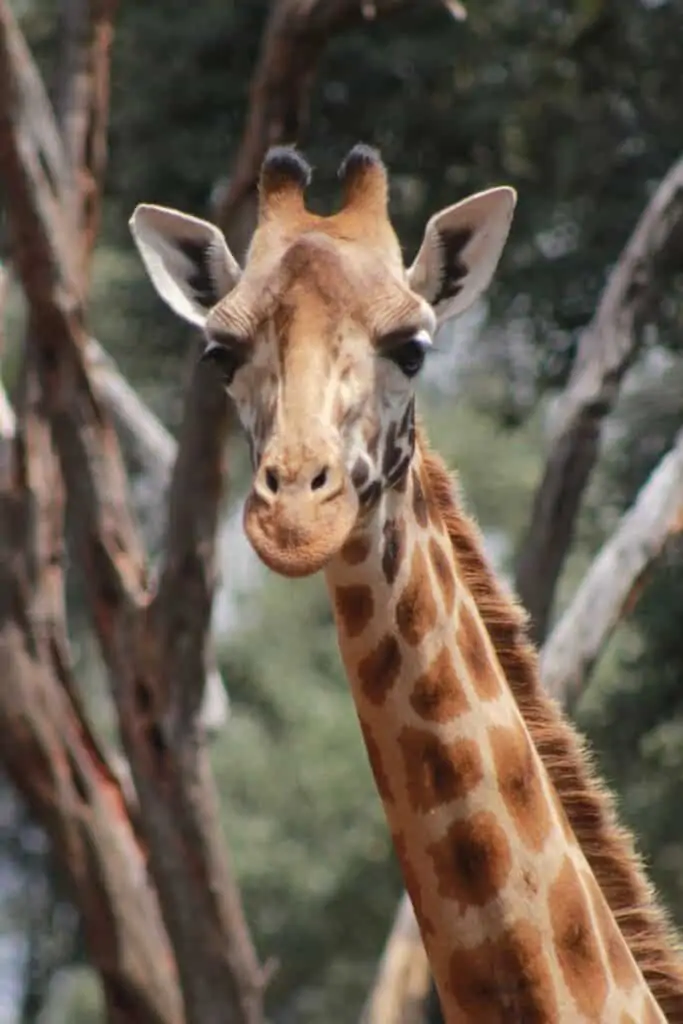
Final thoughts on the Rothschild Giraffe
The Rothschild’s giraffe is a fascinating creature with some unique features, such as its five ossicones and interesting white legs.
They have a docile nature but can be fierce when battling for dominance.
This Nubian giraffe ecotype is listed as near threatened, and many other giraffes are also endangered.
Hopefully, with more awareness, we can continue to help increase the population numbers of not just the Rothschild giraffe but giraffes as a whole.
FAQs
Do Rothschild giraffes breed in captivity?
Yes, Rothschild giraffes have been known to breed in captivity.
In 2013, at the LEOZCC in Greenwich and Stamford, Connecticut, a female Rothschild giraffe was born, the conservation center’s first Rothschild giraffe birth.
Following a media contest, she was named Sandy Hope the Rothschild Giraffe.
Are Rothschild giraffes endangered?
The Rothschild’s giraffe is endangered and is listed as Near Threatened, with an estimated 1,468 mature individuals left.
This breed is listed as an ecotype, however, and not a specific subspecies.
How did the name giraffe come about?
The name giraffe came from the Arabic word: zarafah. It means “fast walker,” a fitting name because judging by its leisurely 16 kph walking pace, giraffes cover a lot of ground in a minimal amount of time.
The name has also been spelled jarraf and/or ziraph. In English, it was called the orafie and gyrfaunte. The Italians initially changed it to Giraffa before the French took over and changed the name to girafe. We just added another f, and the whole world followed suit by accepting the final name as giraffe.
